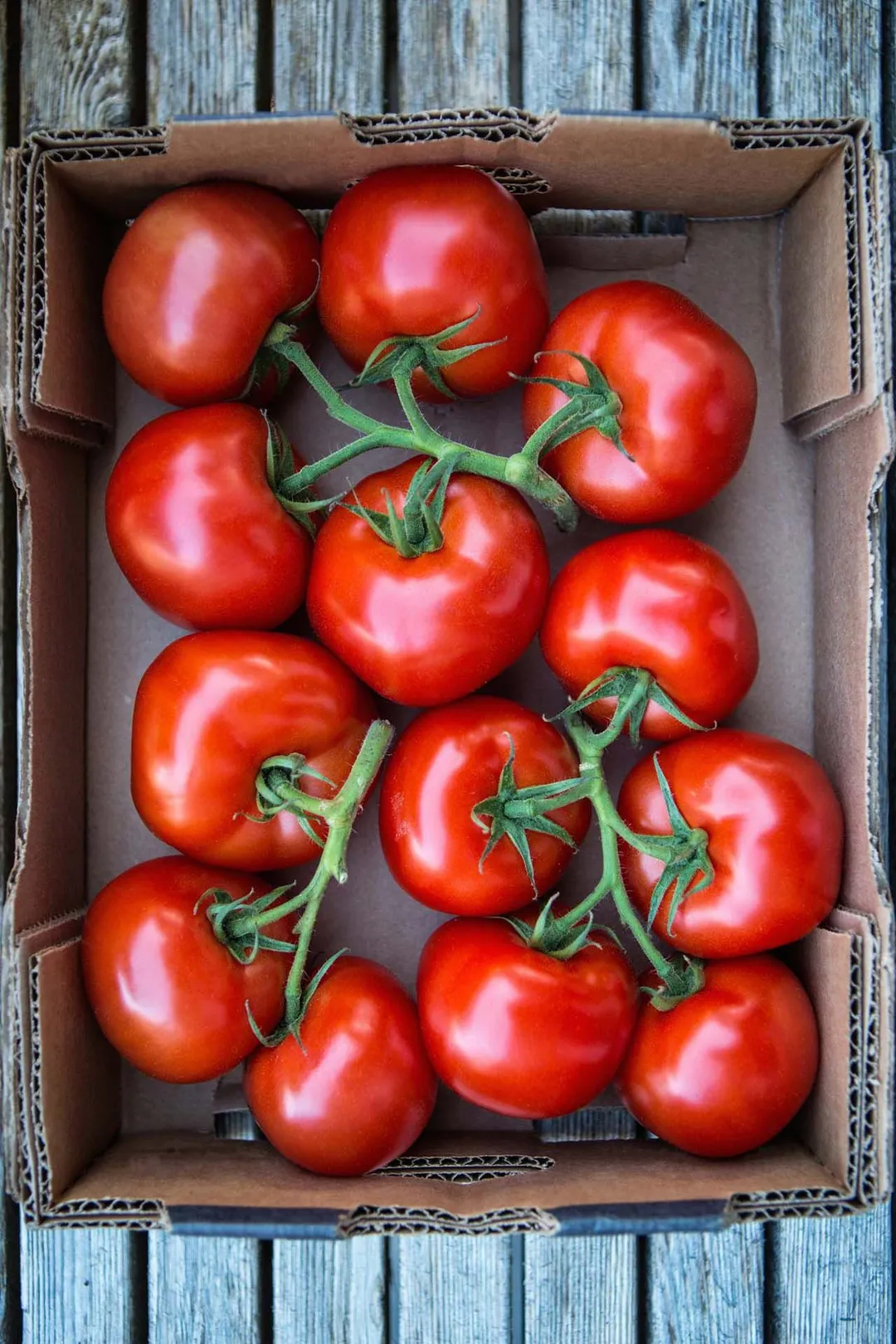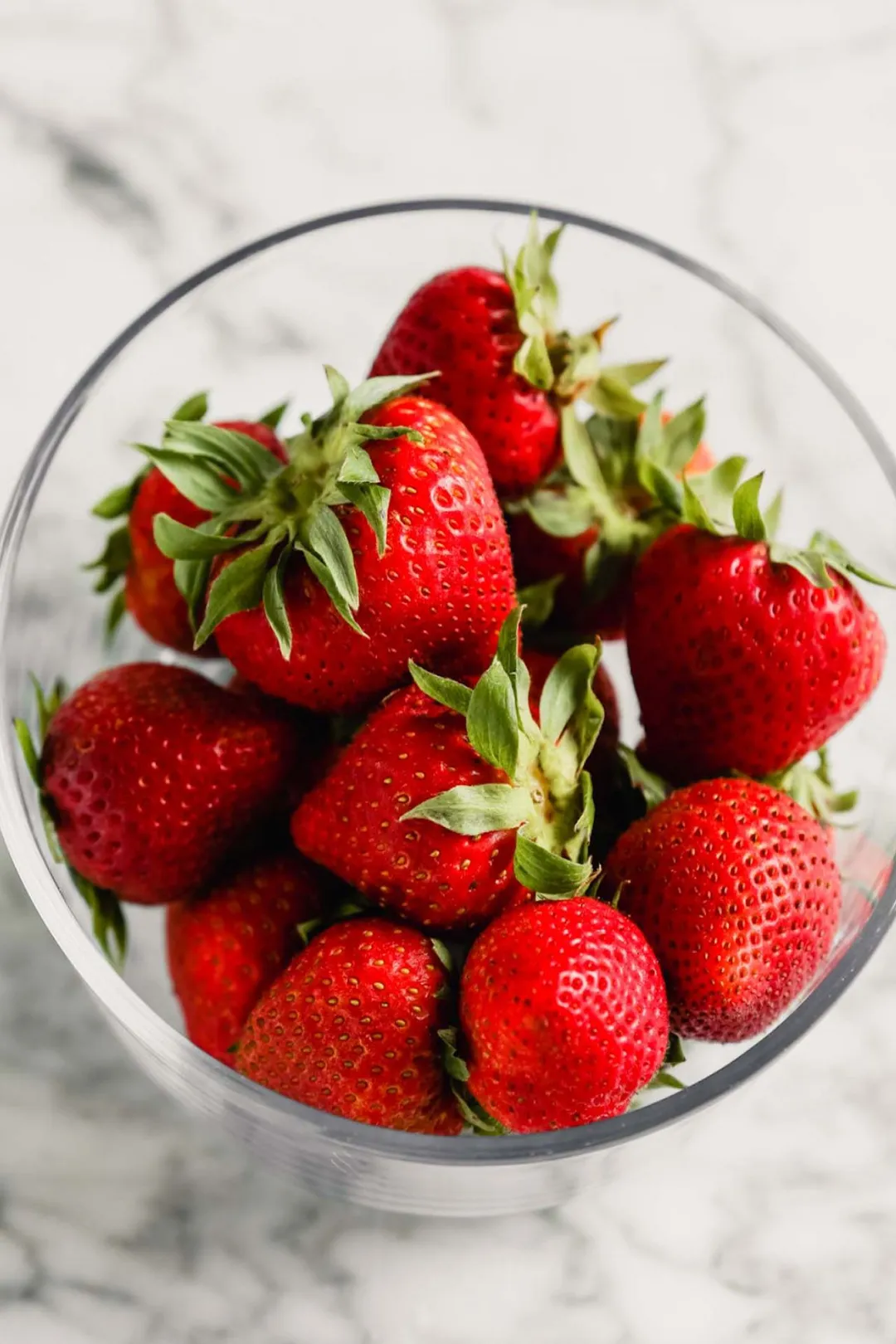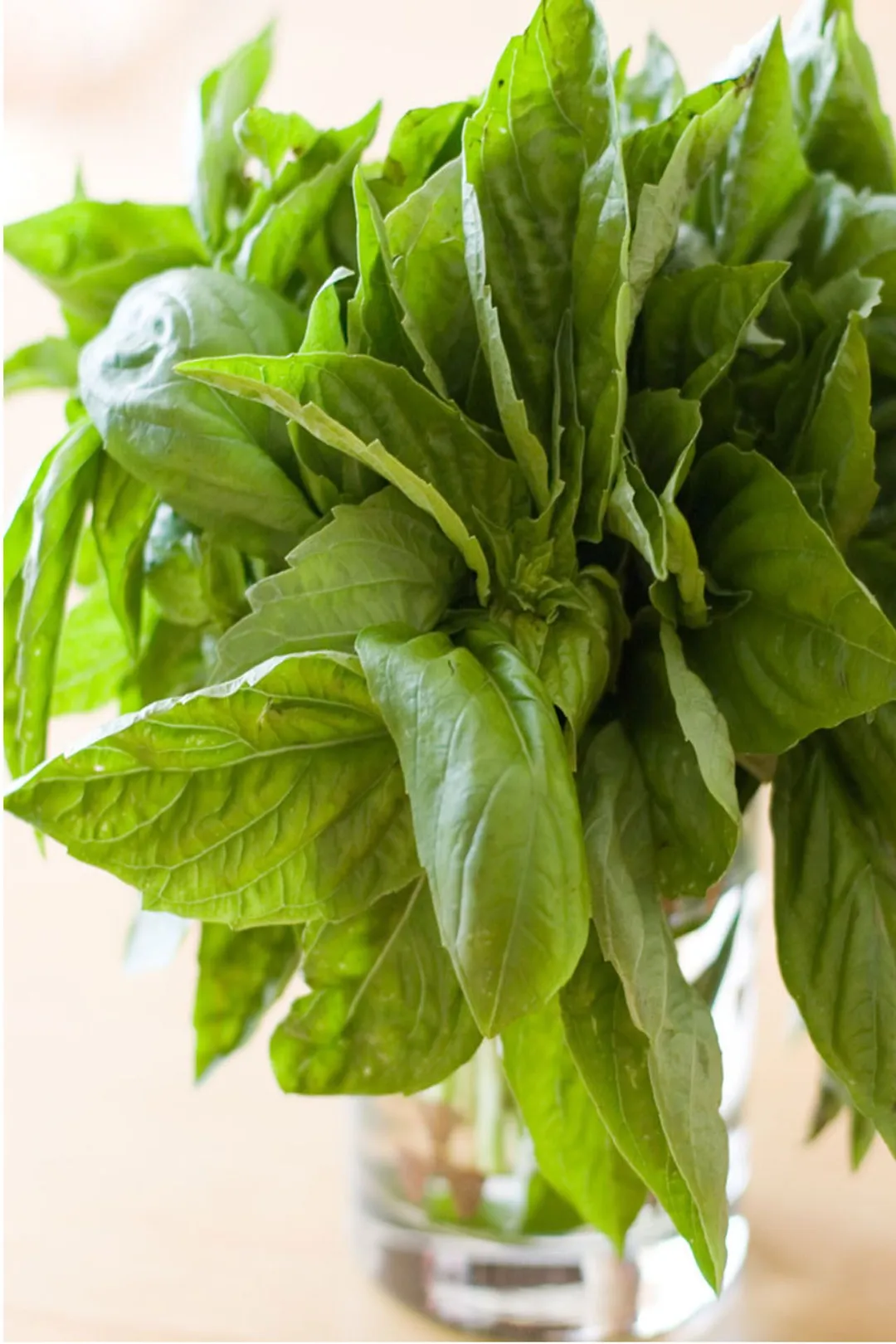“How to store tomatoes” may sound like a simple topic, but in actuality, it’s a fiercely-debated issue among cooks. Some people will warn you never to store tomatoes in plastic, while others will tell you the exact opposite. A few will tell you to never refrigerate your tomatoes, but some will push you to do so.
So, learning how to store your tomatoes can be a rather confusing affair. This guide will clear things up for you.
The Importance of Ripeness
When it comes to tomatoes, the degree of ripeness is incredibly important. It won’t just determine the fruit’s quality, but it will also dictate which storage method is best.
On the vine, when a tomato reaches its full size and turns green, it also begins to produce a gas called ethylene. This gas kickstarts the ripening process, gradually turning the tomato’s skin from bright green to a vibrant red.
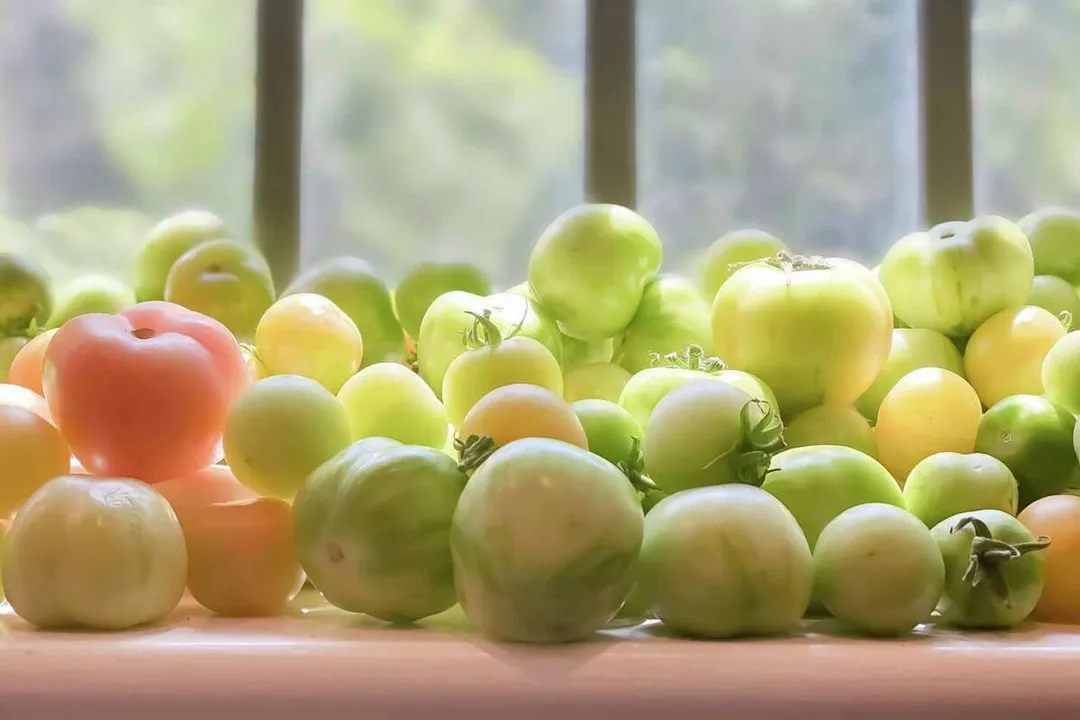
Here is the important bit: a tomato’s ripening process will continue off the vine. The ripening process won’t be interrupted by harvesting. As you might expect, though, this complicates storage a lot compared to other fruits.
In addition to ethylene gas, an unripe tomato is also a hotspot of enzymatic activity. Natural ripening enzymes inside of the tomato will make its flesh softer, and its flavor bolder and sweeter over time.
If your tomatoes haven’t fully ripened, you will want to maintain the ripening process up until they reach the ideal level. That means keeping the enzymes running as normal and the ethylene production active.
Once they have ripened, the process must be stopped. If it’s allowed to continue, your tomatoes will become overripe.
Again, this is why ripeness is so important. The ideal storage method depends on your tomatoes’ current ripening stage.
The Best Ways to Store
If your tomatoes are still ripening, store them at room temperature. Enzyme activity is best at about 68 to 72°F. Ethylene production will continue as normal in this temperature range, too.
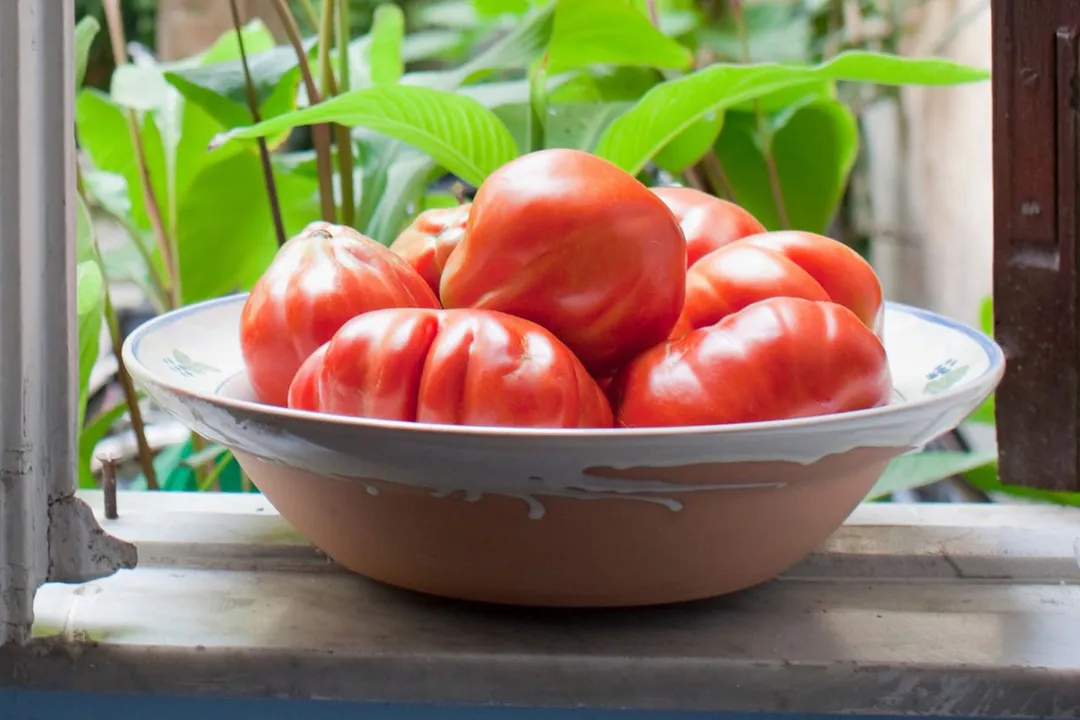
It will take each tomato between 2 days and a week to fully develop.
Do not put unripened tomatoes into the fridge. The cold temperature will bring the ripening process to a halt, ruining the quality of your tomatoes. They will come out with a lackluster color, a bland taste, and a mealy texture.
On the other hand, fully ripened tomatoes should be kept in colder conditions to slow any further ripening. Not too cold, mind you. Between 55 to 70°F is best.
For those who live in hot areas, worry not. Fully ripened tomatoes can be placed into the fridge. A small bit of coloring and flavor may be lost, but fortunately, this loss can be reversed. Remove the tomatoes from the fridge for a day and the enzymes will kick back in, restoring the color and taste.
We recommend this “restoration period” for any tomatoes that you store in the fridge.
1. Where to Store
For unripened tomatoes, storing on a kitchen countertop will do. Just make sure to keep the tomatoes away from windows and direct sunlight.
You can store ripened tomatoes in the cellar or basement. Ensure that temperature is below 70°F at all times.
If you don’t have such a place or the temperature is inadequate, you can store them in the fridge.
2. How to Store Tomatoes for the Long Term
Freezing is the way to go if you want to keep tomatoes for a long time. While quality will definitely suffer compared to fresh or even refrigerated tomatoes, you can keep them for months.
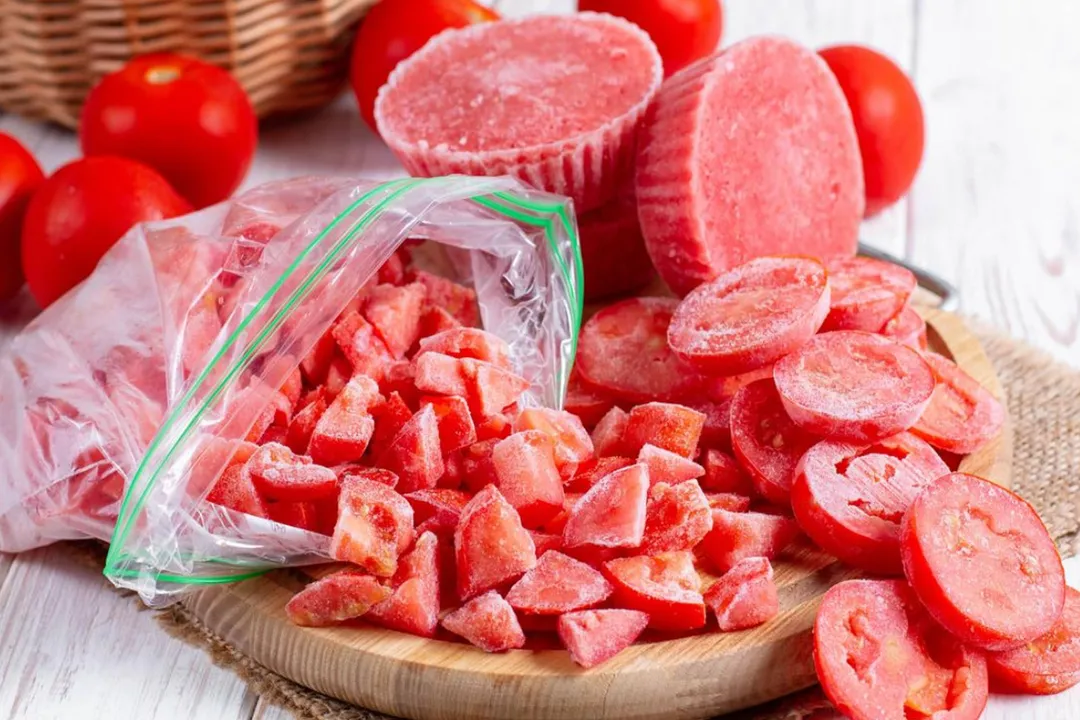
How to Store Tomatoes
1. How to Store Unripened Tomatoes on the Countertop
Since tomatoes should be stored on the counter until they’re ripe, there are a few simple rules to follow. Store them in a breathable basket. Then, stick a piece of tape over the stem scar.
The stem is the most vulnerable part of the tomato. It is where moisture escapes from the fruit. Additionally, it is also where bacteria and mold will often attack. Taping up the stem will largely prevent either of these scenarios from happening.
An alternative to the taping method is to store the tomatoes with the stem side down. However, this method also has its risks. The fleshy portion surrounding the stem of a tomato is very soft and can be easily damaged. Taping accomplishes the same task while being far more gentle.
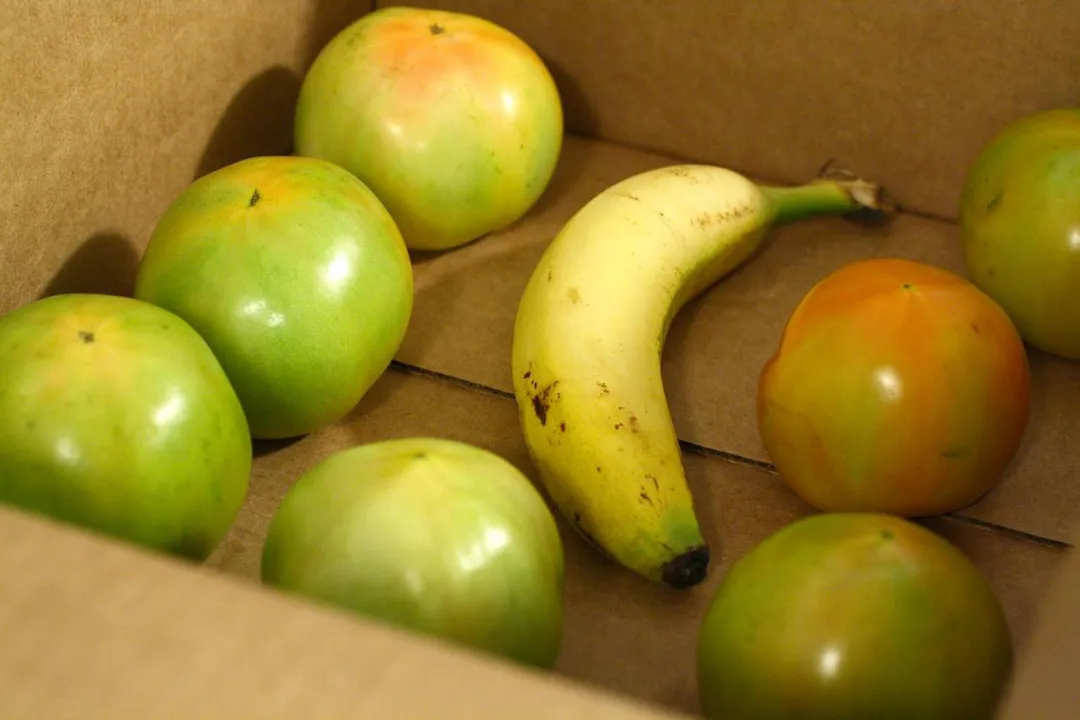
If you have tomatoes that are very unripe (bright green with not even a hint of redness), store them in a paper bag. Just like before, though, you should tape up the stem scars before putting the tomatoes into the bag.
If you do not have a paper bag, use a perforated plastic bag. You can make one by punching holes onto an ordinary grocery bag or produce bag.
Do not use a plastic bag without ventilation holes. It will trap ethylene gas, speeding up the ripening process to such a degree that you’ll probably end up with overripe tomatoes.
2. In the Fridge
You should only store fully ripened tomatoes in the fridge. Do not use this method for unripened tomatoes.
There is no need for sophisticated storage vessels. Just put the tomatoes as they are into a compartment in your fridge.
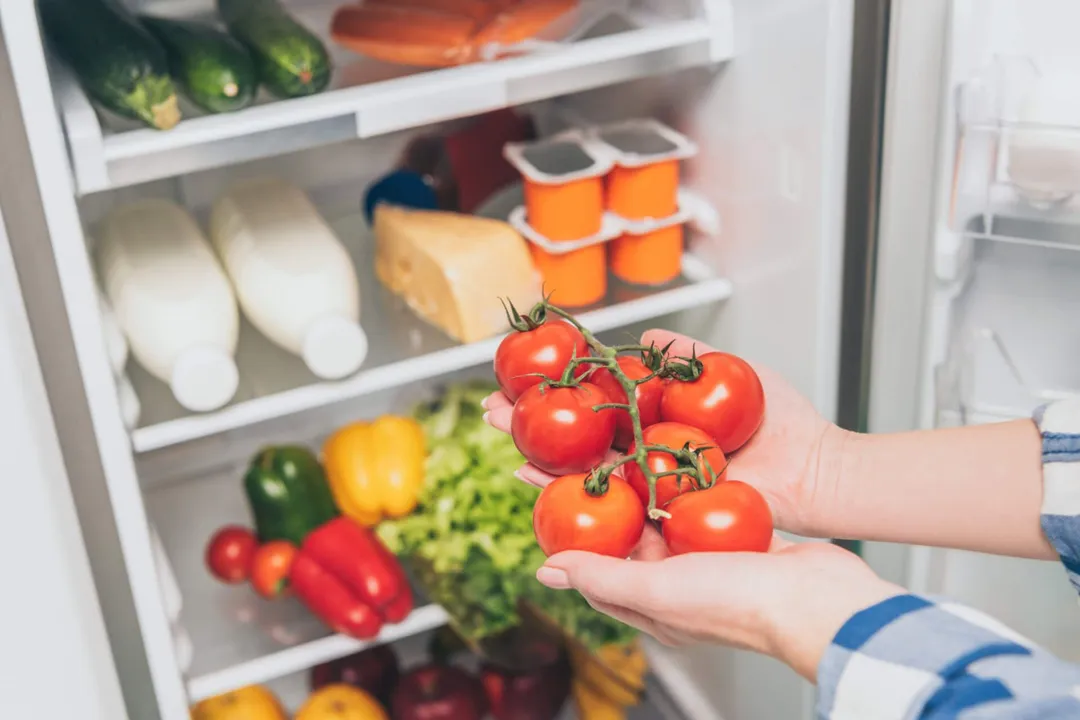
Ideally, if you have a basket that fits well in the fridge and can hold all of your tomatoes, use it. That will help prevent them from being accidentally crushed or bruised.
Fully ripened tomatoes will last in this manner for 5 to 7 days.
Before using the tomatoes, allow them to warm up and “rejuvenate” at room temperature for a few hours. If possible, give them an entire day. The enzymes, which were previously deactivated by the cold temperature, will get back to work. They will restore some of the coloring, texture, and flavor that was lost in the fridge.
3. After Cutting
If you already cut up your tomatoes, they absolutely must be stored in the fridge. Unlike whole tomatoes, cut tomatoes will be spoiled by bacteria and mold within a few hours if kept at room temperature.
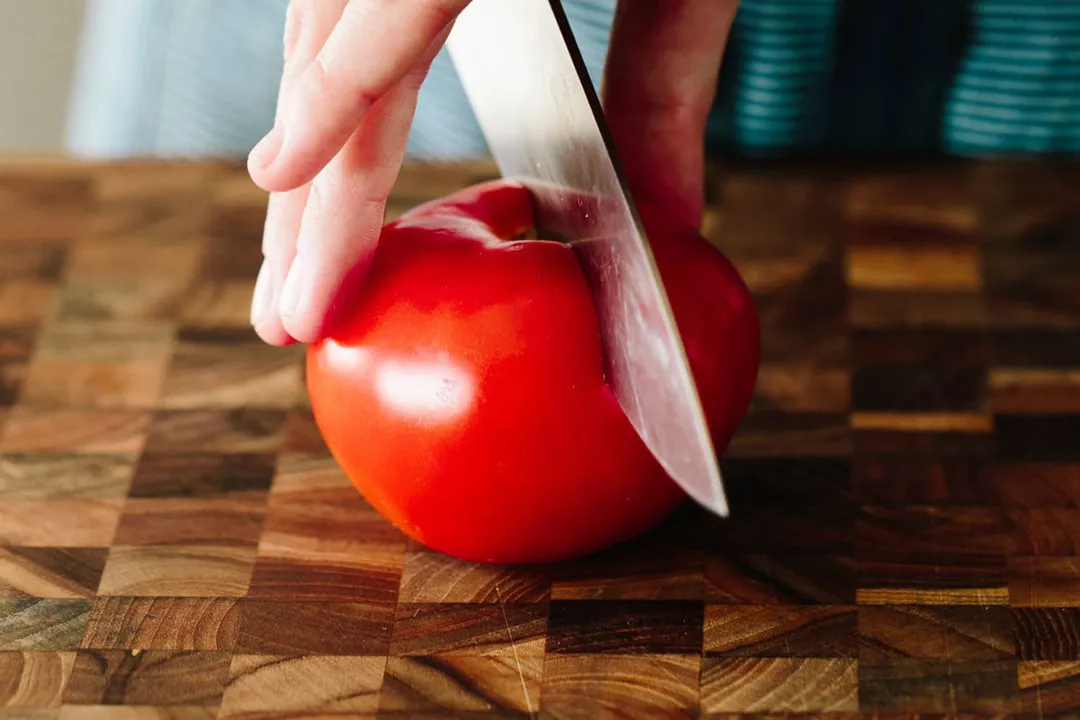
- Halved Tomatoes
Grab an airtight container and line the bottom with paper towels. Then, put the tomato halves with their cut side down onto the paper towels. Seal the lid and place the container into the fridge for safe keeping.
- Chopped Tomatoes
Chopped tomatoes are stored in the same manner as halved tomatoes, but there’s no need to line the container with paper towels. Simply put the chopped pieces into the container, seal, and put into the fridge.
4. From the Garden
Growing your own tomatoes gives you more control over their ripeness at the time of harvesting. Depending on the ripening stage, pick one of the storage methods above. There are no special storage methods for garden-picked tomatoes.
Conclusion
Compared to other fruits, learning how to store tomatoes can be a challenging task. You may need to experiment a lot at first until you figure out the correct formula. Nonetheless, it is highly rewarding and will pay dividends in the form of a constant, fresh supply of tomatoes throughout the year.
Tuyet Pham
Head Chef, Culinary ConsultantLuna Regina
Writer, Author